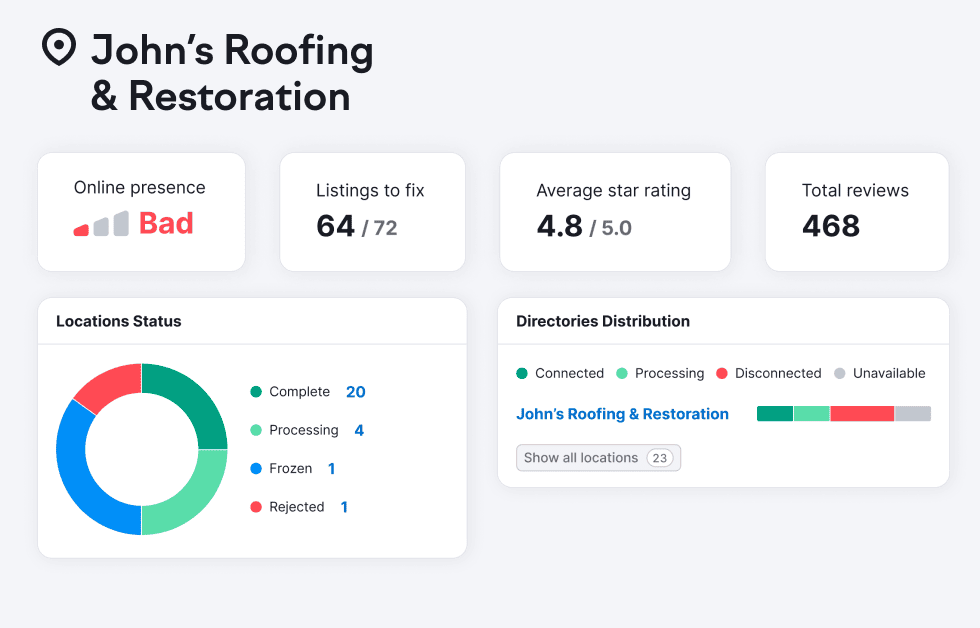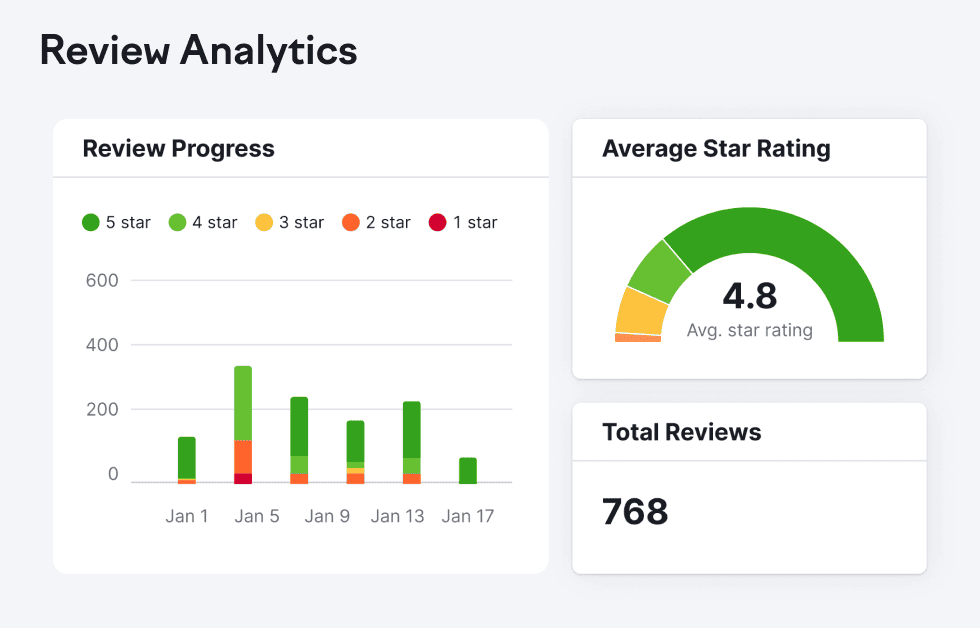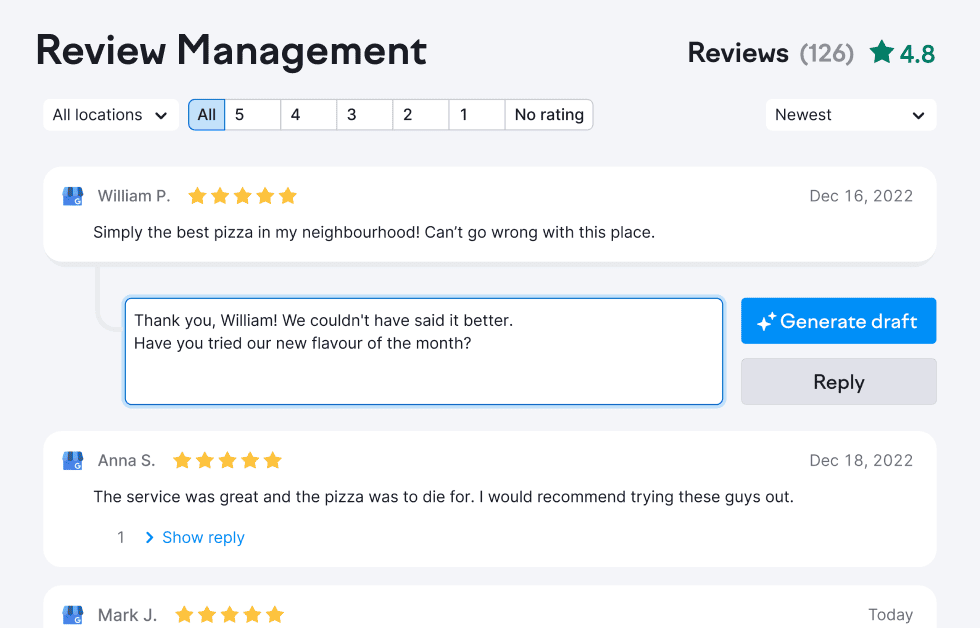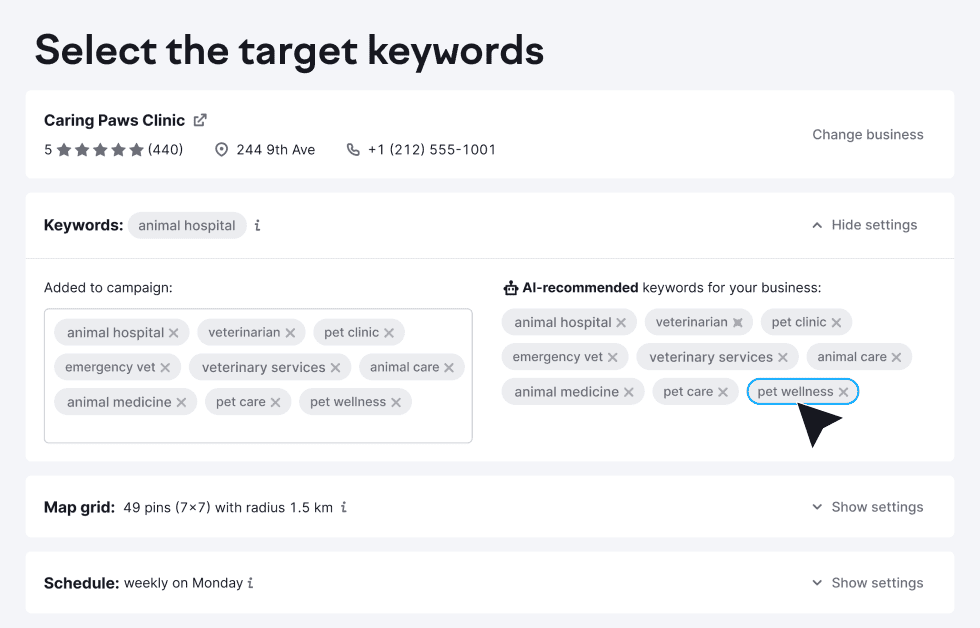- Local search algorithms control the visibility of businesses in result pages and map apps.
- Google has revealed some of the key factors that its local search algorithm uses to determine Search and Maps results.
- Semrush Local’s suite of tools helps small businesses get the attention they need from local search algorithms.
Local search algorithms directly dictate a business's visibility on search engine result pages (SERPs). Fortunately, Google has revealed the key factors that local search algorithms take into account when determining rankings. From relevance to user intent, there are a lot of moving parts involved in how local search algorithms work. But once you understand them, you can design a strategy to get more local visibility for your business.
Understanding local search algorithms
Google's local SEO algorithm is the core driver behind search results specific to a user's location. The search engine has refined its local search algorithm to present users with the best solutions in their neighborhood.

Google Local Pack results for Italian restaurants in Los Angeles
The main factors that influence the algorithm aren’t a mystery, so businesses can directly influence local search algorithms. But the search engine is constantly evolving, meaning small businesses need to keep their fingers on the pulse of the latest changes and updates. Staying on top of local search algorithms is a lot to manage. But with the right approach and tools, businesses of all sizes can improve their local search game.
| Your digital expert: Trust Semrush Local to get your business’s prominence noticed by local search algorithms. |
Key factors valued by local search algorithms
According to Google, three key things make up its local search algorithm: relevance, proximity, and prominence. Relevance hinges on how closely connected a business listing is to a user's search query. The main strategy here is to optimize for local keywords and categories. Distance examines the physical proximity of the business to the user's location. Of course, your business’s location is not usually something you can easily change,but you can create dedicated landing pages for the location and optimize for local keywords. Prominence is about how well known a business is, including reviews, citations, and online mentions. It is the local SEO ranking factor you can make the most impact on with the help of listing and review management tools.

The Google Business Profile dashboard
Understanding Google’s local search algorithm helps businesses develop meaningful strategies and earn more visibility.
| Consistency is key: Semrush Local is the tool you need to align your Google Business Profile with other citations. |
Google and how to optimize for the local search algorithm
For Google, one of the key ways to optimize for the local search algorithm is via Google Business Profile (GBP). It should be one of the top priorities in your local search optimization strategy. First, check that your GBP has accurate information—name, address, contact details, business hours, and genuine images. Google’s Search Liaison recently revealed that whether the business is open impacts local rankings, depending on search intent. This makes opening hours more important to Google’s local search algorithm than ever.

Opening hours as seen on a Google Business Profile
You can boost visibility even further by leveraging Google Business Profile posts, Q&A, product listings, and services. Positive reviews on GBP and other platforms also fortify a business's online presence. Promptly addressing both good and bad reviews demonstrates responsiveness and care towards customer satisfaction. With the dominance of mobile devices, local search algorithms now prioritize mobile-friendly websites. Make sure your site is responsive and easy to navigate on all devices. The rise of voice search has changed how users phrase queries. Optimize for long-tail keywords that people might say into their voice assistants. For instance, phrases like "best coffee shop in [location]?"
Creating localized content that resonates with your target audience can significantly boost local search rankings. This could include writing blog posts about local events or sharing user-generated content about local experiences. Local link building strategies help establish a business's authority and relevance in a specific area. One way to build valuable links is through local directories, especially those specific to the business's industry or locality. Also, try submitting press releases to the local news, contributing to local guides, and leveraging local influencers. Implementing local schema markup on websites provides search engines with specific details about a business's location, operating hours, reviews, and other pertinent information.
| The right tools: Use Semrush Local’s suite of tools to run your local search strategy the right way. |
Using analytics to track your local search strategy
By leveraging analytics tools and platforms, businesses can gain valuable insights into the performance of their local search strategies. This data-driven approach allows for informed decision-making, helping businesses refine their tactics and maximize results.
Monitor the traffic generated from local search queries to your website. Use Google Analytics to track the volume of visitors, their behavior, and engagement metrics specific to local landing pages. Review geographic data on the platform to understand where your website visitors come from. Identify which local keywords are driving the most traffic, conversions, and engagement with Google Search Console.
Platforms like Google Business Profile, Bing Places, and Yelp provide analytics and insights into user interactions. Track views, clicks, calls, direction requests, and keywords that trigger the profile. Go further with third-party tools like Semrush Local, which help make sense of your local analytics.

Semrush Local’s GBP analytics tool
Use tools to monitor the consistency and visibility of your business citations across various directories and platforms. Your NAP data (name, address, phone number) is especially important. Set up conversion tracking with Google Analytics and Google Tag Manager to measure local actions taken on your website. Create goals for form submissions, calls, store visits, and purchases related to local searches.
Use analytics tools to compare your local SEO performance against competitors. Analyze their keyword rankings, traffic sources, and strategies to identify areas for improvement. Regularly review and analyze data to identify trends, successes, and areas that require improvement in your local search strategy.Use these findings to make informed optimizations to your website, content, keywords, and local listings. Iterate and refine your local SEO strategies at regular intervals.
| Clear insights: Semrush Local pulls Google Business Profile insights into the platform alongside other local data for easier reporting. |
Beyond Google: Exploring other search engines
While Google takes center stage, other search engines like Bing, Yahoo, and Apple Maps have local search algorithms of their own. Adhering to best practices across search engines makes for better overall online visibility, expanding the reach to diverse audiences.

A Bing Places result
Similar to Google My Business, Bing Places for Business allows businesses to claim their listings and provide essential information. This can be an important source of local traffic, so it’s worth taking the time to optimize your profile. Bing experts have revealed that social signals are a ranking factor for the search engine, whereas Google has said it ignores them.
Using meta keyword tags in blog posts may still be useful for ranking on Bing. Google discounted meta keywords years ago after people abused them with keyword stuffing. Bing has invested heavily in interpreting images and videos, so visual content works well on the search engine.
In general, Google indexes websites simply by crawling them. Bing might need a little help, so it pays to set up Bing Webmaster Tools and submit a sitemap. An effective local SEO strategy embraces best practices across multiple search engines. This holistic approach ensures you’re covering all your bases with diverse local search algorithms.
Getting on the right side of local search algorithms with Semrush Local
From citation management to review monitoring, Semrush Local takes search algorithms into account to maximize your business’s online presence.
Uniform listings with minimal effort





